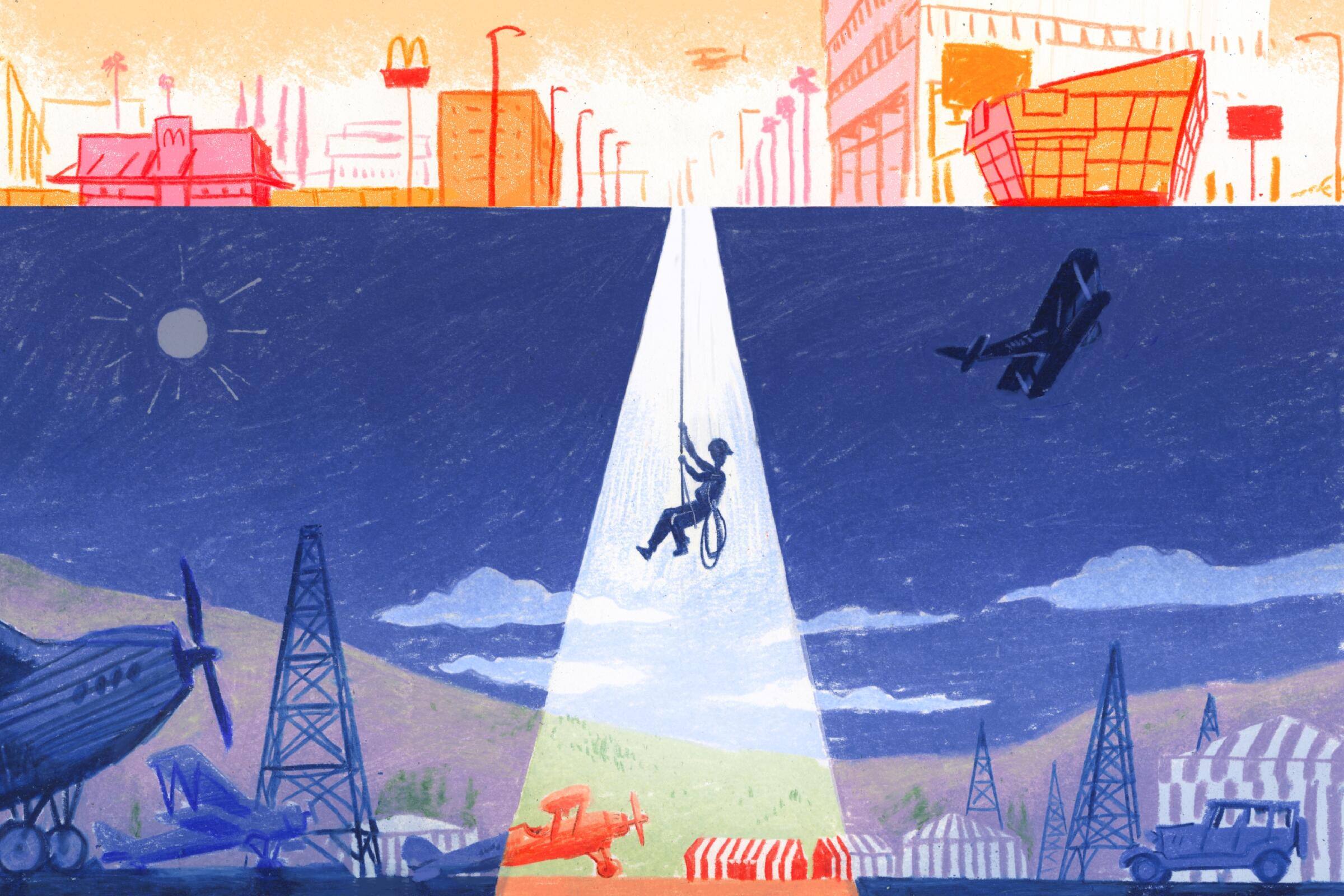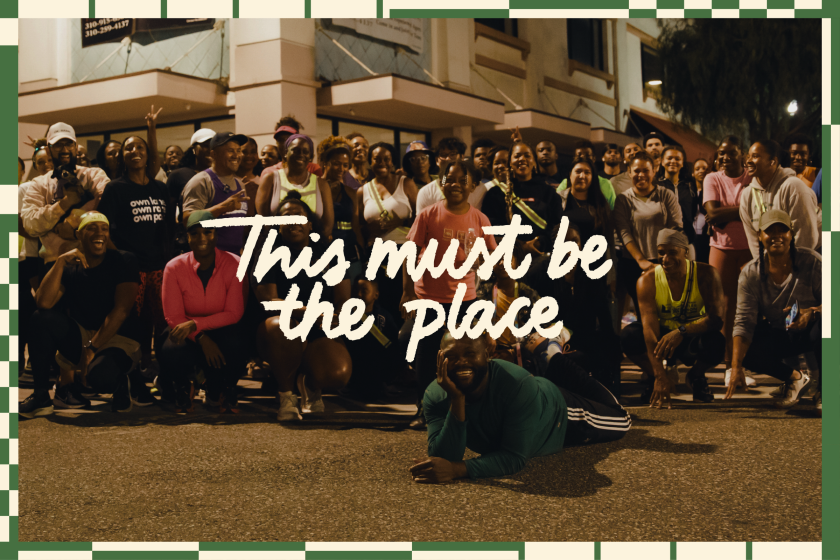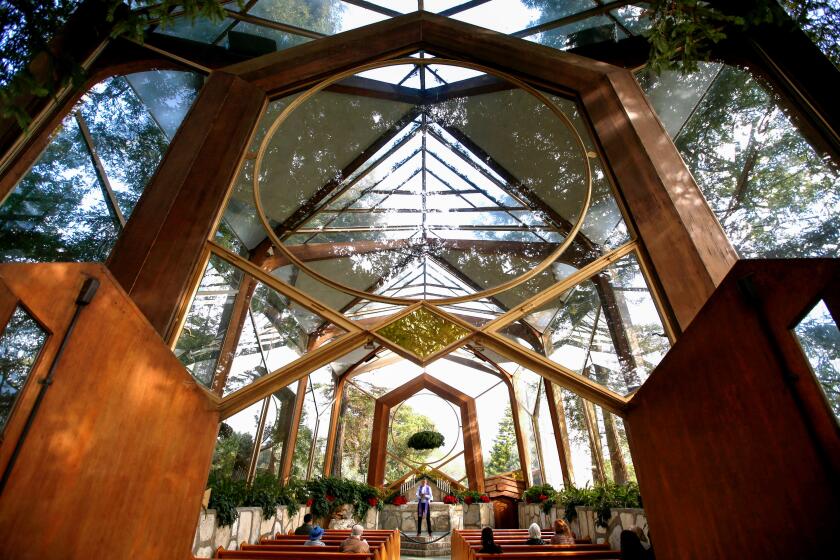That discovery sent me down a rabbit hole that not only eventually revealed a clearer backstory to Beverly Grove but also the vast resources that can be mustered in just a few mouse clicks by any L.A. dweller curious about their own ’hood’s history. Before I get to those, here’s what I’ve managed to puzzle-piece together about what was happening just over a century ago in what’s now my neighborhood.
Based on the treasure trove of photos, The Times archives and a couple of extensively detailed websites compiled by aviation enthusiasts (including a site that lists the latitude, longitude and dimensions of long-defunct airfields), it appears that DeMille field No. 2, owned by DeMille’s Mercury Aviation Co., opened at the northwestern corner of Wilshire and Fairfax (then known as Crescent Boulevard) in 1918. In a move worthy of the modern-day Bezos-Branson space race, Syd Chaplin opened one the next year on the south side of Wilshire.
If DeMille’s east-west airfield, which, according to one account, measured 1,800 feet by 500 feet, was flush against the northwestern corner of Wilshire and Fairfax (the spot currently occupied by Johnie’s Coffee Shop Restaurant), it would have been bounded roughly by what today is Sixth Street to the north and Crescent Heights Boulevard to the west.
It’s clear from the 1922 photo, though, that the scrubby rectangle didn’t sit right against Wilshire but appeared to be further north — perhaps as much as 500 feet — which would have put the southern edge along Sixth Street and the northern edge right through my backyard.
However, the location of DeMille field No. 2 squared with today’s grid of urban streets shows that it wasn’t there long; in 1921, it was merged with Chaplin’s nearby holdings to become Rogers Airport (described in a Times piece announcing the news as “the largest commercial aviation field in America”), and just two years after that, a company called Evans-Ferguson Corp. announced in a Times ad that it had purchased the property “to be subdivided immediately and offered to the public under the name of the Wilshire-Fairfax Tract.”
Today, the only visual clue to the neighborhood’s role in early aviation history is the David Geffen Theater at the Academy Museum. Located just across Fairfax from where the airfield once stood, the eye-catching spherical building’s design is, according to my Times colleague Carolina Miranda, “inspired by the dirigibles that used to touch down in the area.” (Take that, Goodyear Blimp!)












